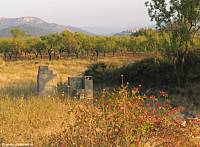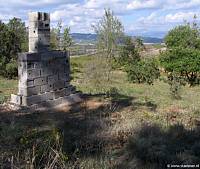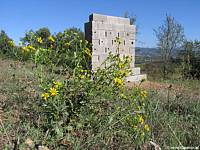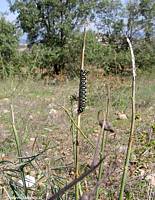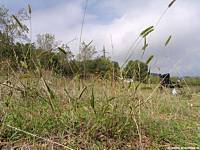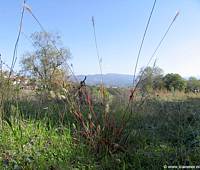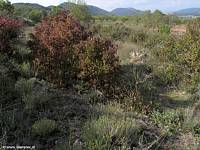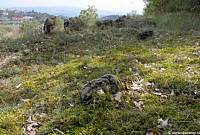|
|
Nature
Switched On
|
|
|
introduction |
One of the first things I did when we spent the first weekend on our
own terrain was taking away the On-Sale sign of the estate agency
which was fixed to a pile of cement blocks. Then I started to move
some of these blocks with the intention of taking them to a better
place. At that moment some bats escaped suddenly from the pile. I
also discovered two wasp nests
These blocks are hollow and offer a lot of niches
and hiding places. The new wall has a sunny and dry south exposition
and a shady, humid north face. Some blocks were filled with soil
and/or branches and wood. It's unknown to me how these blocks will
react to weather conditions like ice, water and temperature changes.
Some months later I planted here
This caterpillar is the
larva of a Hyles euphorbiae
(Spurge Hawk-moth) and it is eating from a Spurge species, in
this case an
Euphorbia cyparissias,
The general aspect of the terrain has started to become quite green. Some species take advantage of their roots or rhizomes, others germinate from seed. The latter is the case of Setaria pumila (Yellow bottlegrass) an obtrusive annual grass species. Two weeks later some specimens had aquired a beautiful reddish colour.
|
|
| This was
the pile of blocks in the beginning 3 Sep 2006, 8:15 |
||
|
The first version of the "biowall" on the western part of the
terrain. 1 Oct 2006, 15:28 |
||
|
The biowall on |
||
|
Larva of Hyles euphorbiae eating
of an Euphorbia cyparissias. |
||
|
Setaria
pumila with
Holcus lanatus 10:48 |
Setaria pumila two
weeks later. 14 Oct 2006 11:36 |
|
|
Looking west.
Satureja montana
in
the foreground,
Cornus sanguinea
to the left and
honeysuckles and brambles to the right.15:08 |
Looking east, in the central
part of the terrain. |
|
|
introduction
|
||
|
|
||
